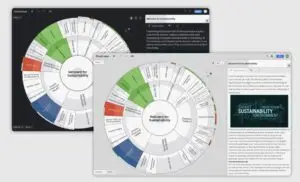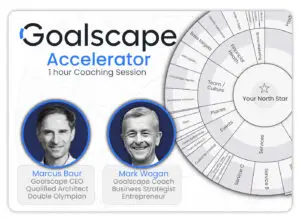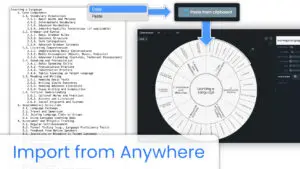When it comes to defining and achieving goals, Goalscape is far superior to mindmapping.
Just look at the two screenshots below: they represent the same structure and content, yet they are very different.
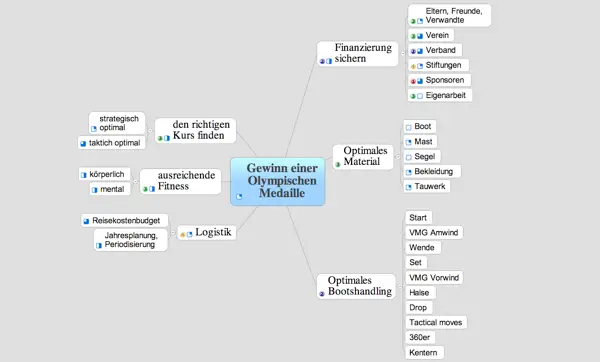
The mindmap uses tiny icons to denote importance and progress, so it is hard to tell what is more important and what is less important. The same is true for the progress.
By contrast Goalscape shows the relative importance and progress directly and intuitively: the size of each goal is its importance and the shading is progress. The information practically leaps from the screen and the picture is much more meaningful.
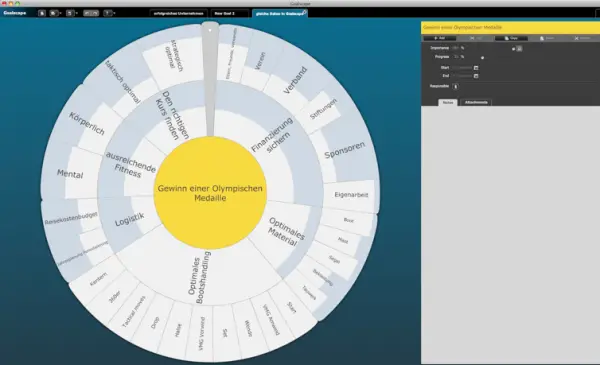
There are key differences in using the tools as well. While mindmaps are quite good at showing dependencies, they have no concept of upward progress. With Goalscape however, as you enter your progress in lower level goals it automatically reflects upwards all the way to the main goal. Every time you check off a completed task you immediately see the contribution it makes to your overall progress.
There is also some inherent rigor with Goalscape: the importances of any set of subgoals must add up to 100%. So when you change priorities by adjusting the importance of one goal, it has an immediate and obvious effect on all its neighboring goals. Mindmaps do not capture any information about the relationships between subgoals of the same parent, so changing the importance of a goal has no effect on its neighbors.
Goalscape beats mindmapping by a wide margin: it not only has a clearer and richer visual format, it has far more functionality and is easier to drive.

